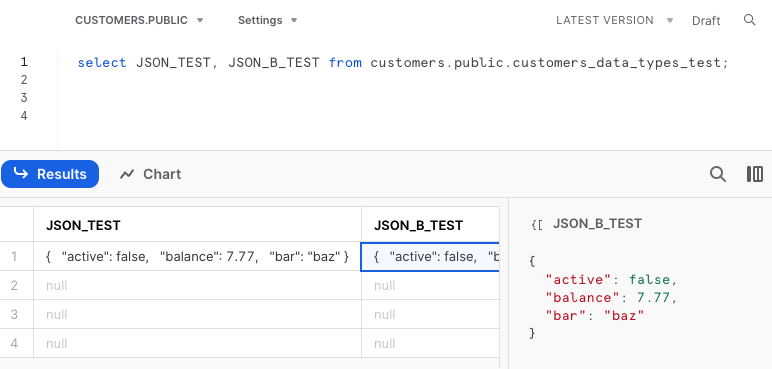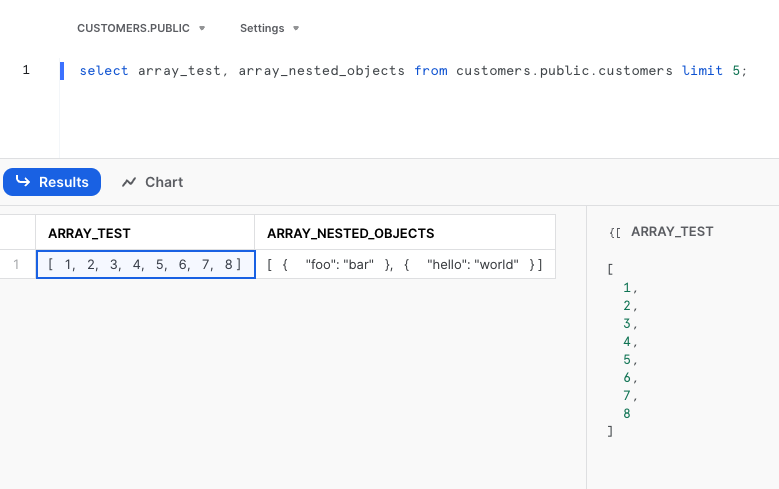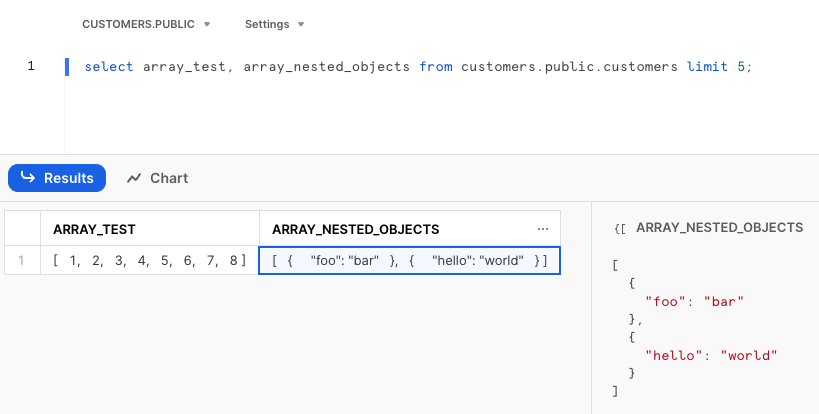Overview 🎯
Artie’s custom typing library is the backbone of our data transfer system. It ensures that your data maintains its original structure and types when moving between sources and destinations.Key Features ✨
- Schema Evolution: Automatically detects and adds missing columns
- Type Inference: Intelligently determines data types from values
- Performance: 2x faster than Go’s Reflect library
- Data Integrity: Zero data transformation or loss
Schema Propagation Behavior
Artie’s typing library governs when schema changes are picked up and reflected downstream — which depends on whether your source is relational or non-relational.Relational Sources (e.g., Postgres, MySQL)
- Artie reads the source schema directly
- New tables and columns are synced immediately, even when values are all NULL
- No need to wait for populated data — schema updates are applied on first detection
Non-Relational Sources (e.g., DynamoDB, MongoDB)
Here, schemas are not strictly defined, so Artie takes a more cautious approach:- New columns are typed based on the first not-NULL value
- If a new column or table only contains NULLs, it won’t be propagated until real data shows up
- This helps avoid guessing or applying incorrect types based on incomplete information
💡 Pro Tip: For non-relational sources, insert a row with actual values to trigger schema propagation downstream — Artie will inspect the data type and infer the correct type in the destination.
Data Type Handling 🔍
Artie’s typing library intelligently handles data type mapping between your source and destination systems. Here’s how it works:- Initial Type Detection: When data first arrives, Artie analyzes the source schema and values to determine the most appropriate data type for your destination.
- Type Preservation: Once a data type is established in your destination, Artie uses the destination schema as a source of truth and maintains that type to ensure consistency.
- Data Type Conversion: If source and destination types differ, Artie automatically converts the data while preserving its integrity.
What happens if type conversion fails?
What happens if type conversion fails?
If Artie encounters a type conversion that could lead to data loss or errors, we’ll:
- Raise a clear error message
- Notify you immediately
- Work with you to resolve the issue
Numbers
We preserve the exact numeric type from your source (Postgres, MySQL, or MongoDB). Here’s how we handle different number formats:5→ Integer"5"→ String5.0→ Float
JSON Objects
We maintain JSON objects exactly as they appear in your source, with no flattening or transformation.
💡 Pro Tip: If you prefer to store JSON as a string, you can explicitly specify the column type as STRING in your schema.
Arrays
We support both simple and complex array structures:- Simple arrays
- Nested arrays with objects


Timestamps, Dates, and Times ⏰
Our library supports 15+ different time formats with zero precision loss. We preserve your original time layout using our customtime.Time object.
💡 Pro Tip: Like JSON objects, you can override time type inference by specifying your preferred data type in the schema.
Advanced
Postgres variable numeric
Postgres variable numeric
A in Postgres requires special handling when transferring to different destinations. By default, we will create this type as a string equivalent column so that we do not have to trade off data precision. You can override this behavior by modifying the destination column type.
Why do we treat a variable numeric column differently?We treat this column type differently because Postgres will allow you to store arbitrary amount of digits in each cell up to the . This exceeds most destination’s numeric data type limits, as such we will create a string equivalent column to preserve data precision.